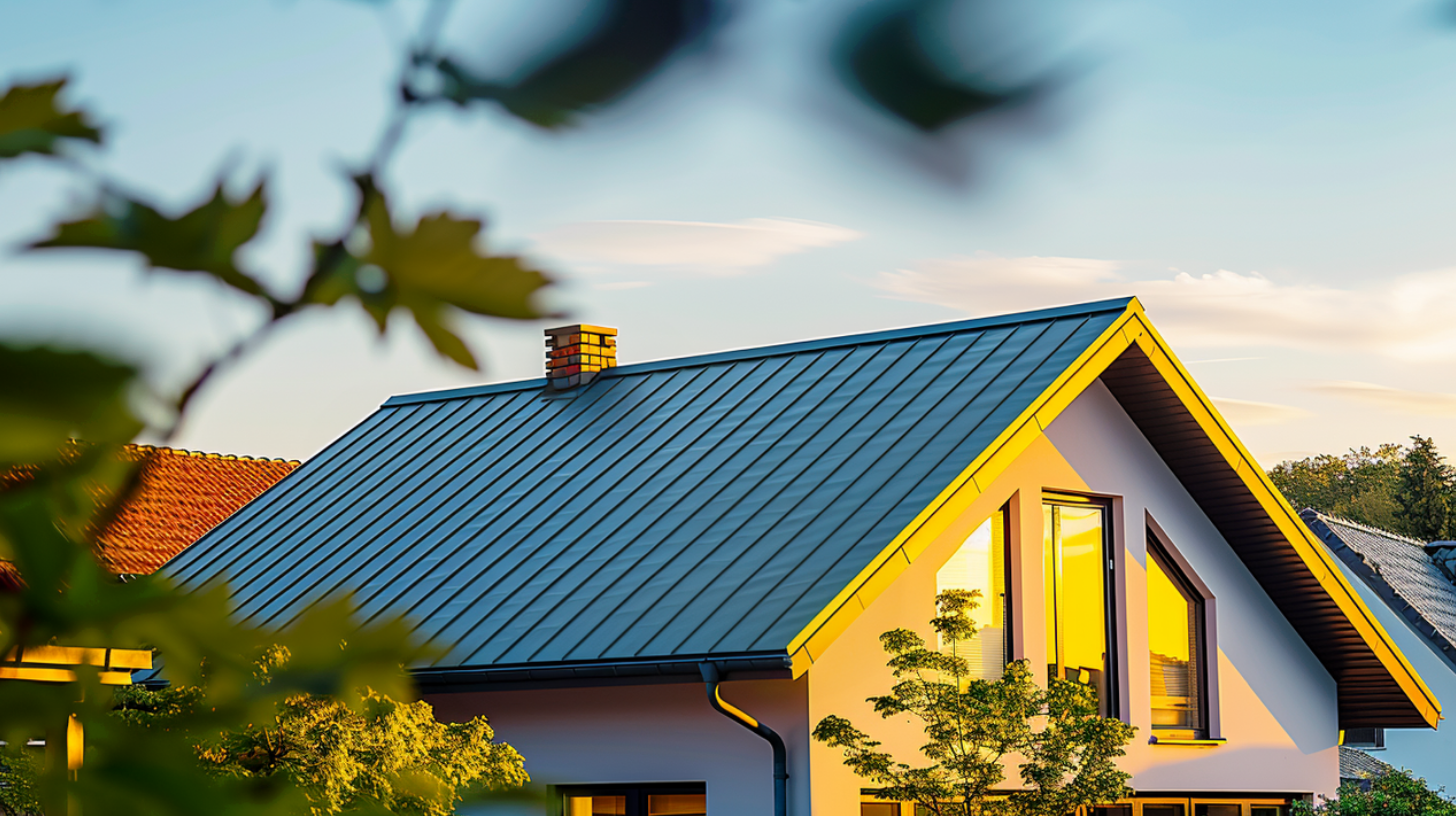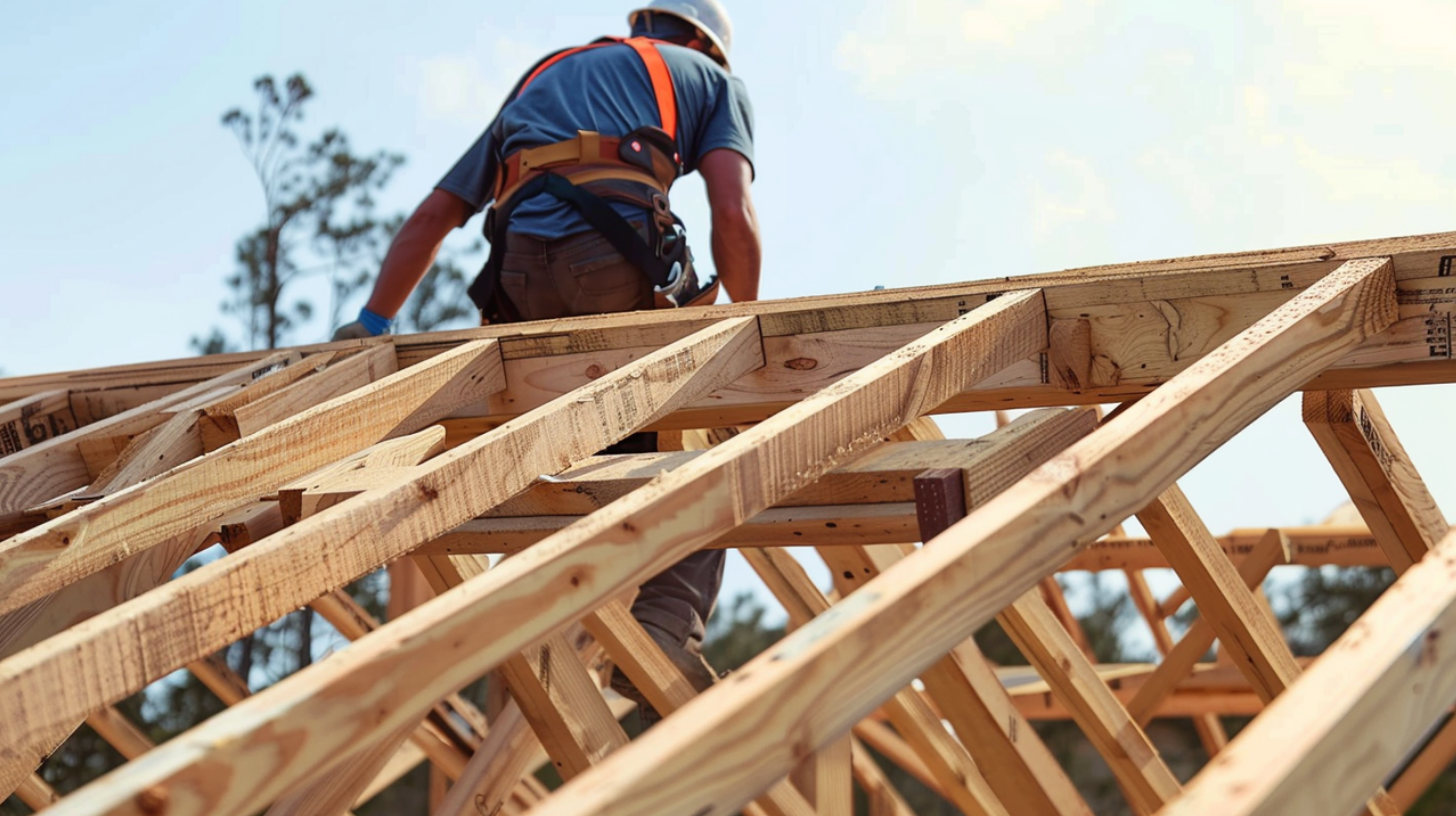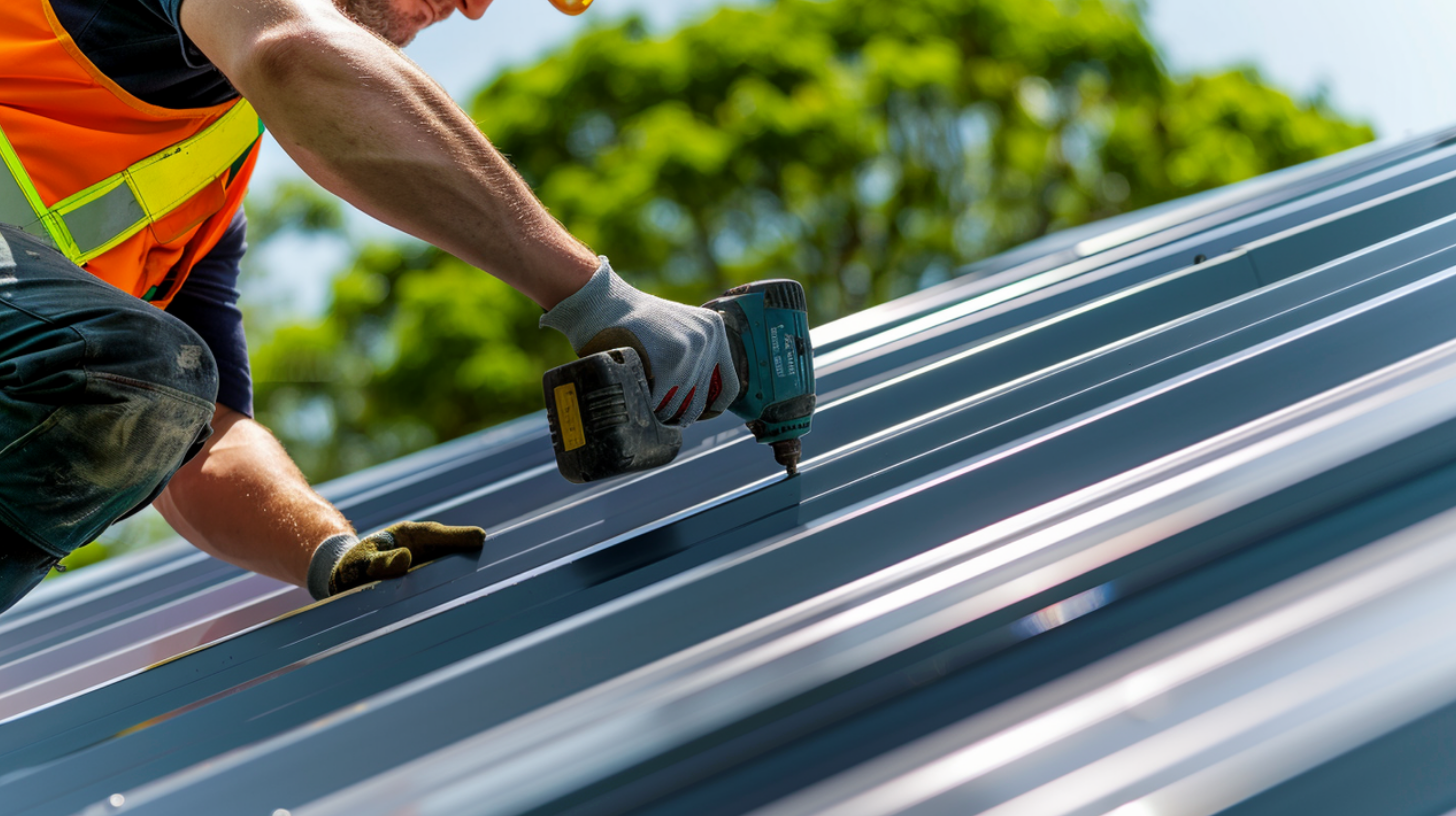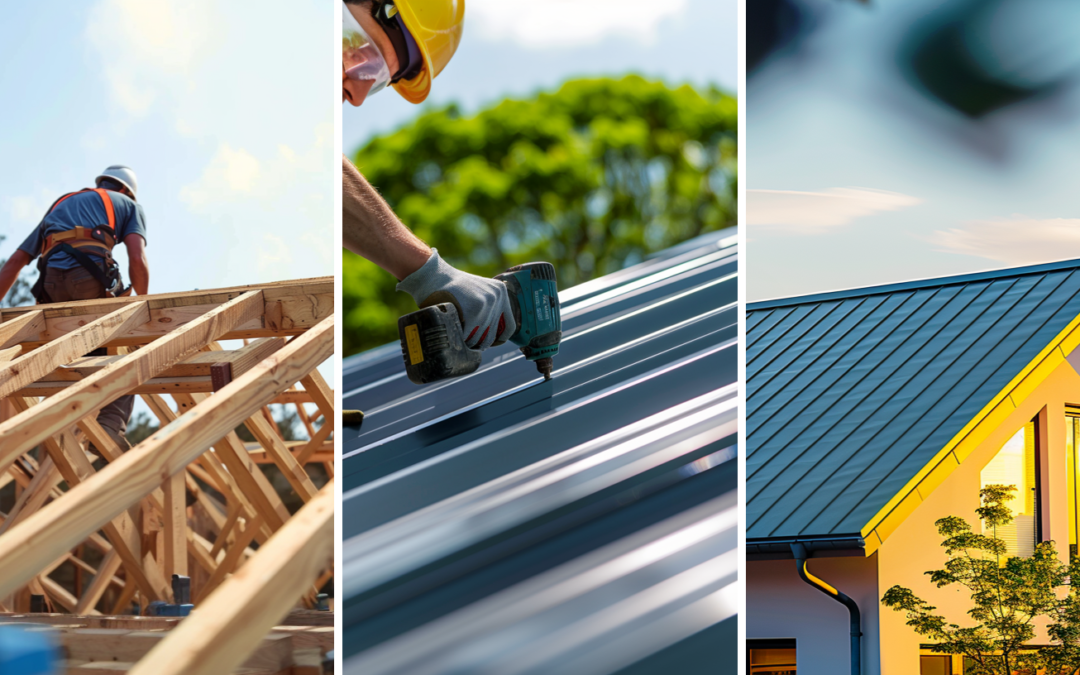Understanding the Basics of Installation
Roof installation involves fitting and securing a new roof onto a structure. This service ensures the roof is installed correctly and protects the building from external elements such as rain, sunlight, and debris.
Expert installation not only guarantees a structurally sound roof but also offers a myriad of benefits. First and foremost, a professionally installed roof enhances the property’s overall appearance, adding value and curb appeal. Additionally, proper installation ensures that the roof is resilient, durable, and long-lasting, serving as a reliable defense against leaks and other potential damages.
Furthermore, a correctly installed roof improves energy efficiency by preventing heat or cold air from escaping, reducing energy consumption, and lowering utility bills. Moreover, professional installation adheres to safety standards and guidelines, minimizing the risk of accidents or injury during roofing.
By investing in installation services provided by reputable roofing contractors, homeowners and building owners can enjoy a well-installed roof that offers both practical and aesthetic benefits.

Installation - Professional Roofing Installation - Sky Roofing Construction & Remodeling
Why Choose Professional Roofing Installation?
Professional roofing installation also offers a wide range of roofing material options. Whether it’s asphalt, metal, or shingle roofs, professional installers offer a variety of choices, allowing homeowners to find the perfect match for their style and budget and create a beautiful roof.
Another advantage of choosing professional installation is the convenience of permit handling and trash removal services. Obtaining the necessary permits for a roofing project, including roof inspection, can be complex and time-consuming. However, professional installers have the experience and resources to handle this paperwork efficiently, ensuring the project complies with local regulations. Additionally, these experts remove trash, eliminating the hassle of disposing of old roofing materials.
Types of Roof Installations Offered
Considering the benefits and considerations of each type of roof installation is essential for homeowners and building owners alike. Whether you prioritize cost-effectiveness, durability, energy efficiency, or environmental sustainability, there is a roofing option that perfectly suits your needs. By exploring the various available installations, you can make an informed decision that ensures your property’s long-term protection and beauty.
Residential Roof Installations
Asphalt shingles are a popular choice due to their affordability, easy installation, and versatility in design options. They provide excellent protection against the elements, including wind and rain. Metal roofing is another durable option with a long lifespan and resistance to fire, infestations, and extreme weather conditions. It can also be chosen in various styles and colors to suit individual preferences. Clay tiles, on the other hand, offer a timeless and elegant appearance coupled with exceptional durability and energy efficiency.
The process of residential roof installation involves several important steps. It begins with removing the old roof, where all existing shingles, underlayment, and flashing are carefully removed. This step is crucial to providing a clean and stable foundation for the new roof.
Once the underlayment is in place, shingles are installed to provide the primary layer of protection for the roof. High-quality shingles are carefully selected and laid out in a pattern that ensures maximum durability and aesthetics. Proper installation techniques, such as nailing along the designated lines, are followed to achieve the best results.
Lastly, vent replacement or addition enhances the roof’s ventilation system. Adequate ventilation is essential to promote a healthy environment within the attic space, preventing moisture buildup and the potential for structural damage.
Commercial Roof Installations
When considering commercial roof installations, several key factors must be considered. These include the size and dimensions of the building, the climate and weather conditions in the area, and the specific needs and requirements of the property owner. Typical materials utilized in commercial roof installations, chosen by roofing experts, include metal, asphalt, and modified bitumen.
The installation process typically begins with removing the old roofing system, followed by a thorough roof inspection of the roof’s underlying structure. Before the installation, any necessary repairs or reinforcements are made.
Once the roof is prepared, the installation involves carefully laying down the chosen roofing material according to industry-standard techniques. This may include using specialized equipment such as cranes or hoists to transport and position the materials.
Throughout the installation process, strict attention is paid to ensuring proper insulation, waterproofing, and ventilation. These aspects of roof construction are essential in maintaining the longevity and integrity of the commercial roof.

Installation - Roofing Installation Process - Sky Roofing Construction & Remodeling
The Roofing Installation Process
Initial Consultation and Assessment
During the consultation, the team conducts a thorough assessment to evaluate the roof’s current condition and identify potential issues. This assessment involves a comprehensive roof inspection, examining its structure, ventilation, and overall condition. The team can carefully analyze these factors to determine the material options that best suit the client’s needs.
The consultation discusses various factors, including the homeowner or building owner’s budget, specific requirements, and preferences. This allows the team to understand the client’s vision and tailor the installation process accordingly. Additionally, sample preferences are considered during the consultation, as homeowners may have specific materials or designs in mind.
By thoroughly conducting an initial consultation and assessment, the roofing contractor ensures that the installation process is well-planned and executed efficiently. This approach allows them to provide the best roofing solution for each client, ensuring their satisfaction and the longevity of their roof.
Roof Material Selection
Another important aspect is the shingle installation process. Various types of shingles, such as asphalt, metal, and tile, are available. Each has advantages, such as durability, energy efficiency, and aesthetic appeal. Discussing the options available for shingle materials with the roofing contractor during the quoting process is essential.
Selecting suitable materials is vital to ensuring the longevity and quality of the roof. It is important to take the time to discuss and understand the options with the contractor during the quoting process. This allows homeowners and building owners to make an informed decision based on their needs and preferences. With the various underlayment and shingle options available, the installation process can be tailored to suit the specific requirements of each project. So, before embarking on a roofing installation, discuss all available options with your contractor.
Installation Timeline and Steps
Installing a new roof is an important investment for any homeowner or building owner. A detailed timeline and specific installation steps must be followed to ensure a successful and watertight installation. Here is a chronological guide to the roof installation process.
1. Pre-installation Preparation: The first step involves assessing the current roof condition and preparing the site. Any existing roof materials are removed, and the surface is thoroughly cleaned and inspected for potential issues, including starter strip evaluation.
2. Installation of Underlayment: The underlayment, a critical layer that provides additional protection against water infiltration, is rolled out and properly fastened to the roof deck. This ensures a secure base for the roofing system and secures nail heads for durability.
3. Flashing Installation: While existing step flashing and dormer flashing can often be reused, it is essential to examine their condition carefully. Any damaged or deteriorated flashing should be replaced to guarantee a watertight seal. New step flashing and dormer flashing are installed strategically around roof intersections and openings to prevent water penetration.
4. Roofing Material Application: The next step involves the careful application of the chosen roofing material, whether it is shingles, tiles, or metal panels. Each piece is expertly placed and secured, ensuring proper alignment and a visually appealing result.
5. Ridge Vent Installation: Installing a ridge vent allows for proper ventilation, helping to reduce heat buildup and moisture accumulation in the attic. This step contributes to prolonging the roof’s lifespan.
6. Final Inspection and Cleanup: Once the installation is complete, a final inspection ensures everything is correctly installed and meets quality standards. Any debris or waste materials are removed from the site, leaving the customer with a clean and satisfied finish.
Following this timeline and specific installation steps, including assessing existing flashing, installing new flashing, and achieving a watertight seal, the roofing contractor guarantees a reliable and long-lasting roofing solution for homeowners and building owners.

Installation - Key Considerations for Roof Installation - Sky Roofing Construction & Remodeling
Key Considerations for a Successful Roof Installation
Another important consideration is building codes and permits. It is essential to comply with local building codes and obtain the necessary permits from the building department before starting the installation. Failure to do so can result in legal issues and additional costs. Building officials enforce these codes to ensure the safety and structural integrity of the entire roof, so it is vital to adhere to them.
Roof ventilation and insulation are also critical factors to consider during installation. Proper ventilation helps to regulate the temperature and humidity inside the building, preventing moisture buildup and potential damage. Insulation is crucial for energy efficiency, as it helps to maintain a comfortable indoor temperature and reduces heating and cooling costs.
A successful roof installation requires careful consideration of various factors, including building permits, building officials’ guidelines, and safety considerations. By considering these factors, homeowners and building owners can ensure a durable, safe, and energy-efficient roof for their property.
Signs You Need a New Roof Installation
One of the most obvious signs is the age of your roof. As the years go by, shingles can become damaged or worn out, making them less effective in shielding your property. Additionally, roof vents and roof ridges might show signs of wear and need replacement.
Roof leaks and water damage indicate that your roof is no longer doing its job adequately. Structural damage, such as sagging or a shift in the roof structure, is another sign to look out for. Immediate attention from roofing professionals is necessary to prevent more significant problems down the line.
Mold and mildew growth, facilitated by inadequate roof ventilation, are unsightly and harmful to your health and the integrity of your property. If you spot these signs, it’s time to consider investing in a new roof installation.
When protecting your home or building, it is crucial to recognize these signs and consult with roofing professionals. Be sure to consider a roof replacement before extensive damage. By acting promptly, you ensure your property’s longevity, safety, and efficiency for years.
Consider Professional Roofing Installation Today
Installation is crucial to maintaining a secure and efficient roofing system for your home or building. Whether you’re noticing signs of wear, leaks, or structural issues, investing in professional roof installation ensures lasting protection and peace of mind. Our Sky Roofing Construction & Remodeling team (https://www.skyroofingconstructiontx.com) is ready to assist you with expert guidance and quality service. Contact us at (210) 942-9797 to schedule a roofing consultation today. Let us help you safeguard your property with a beautifully installed roof that enhances functionality and aesthetic appeal.
Willis Vachon is a seasoned contributing writer for Sky Roofing Construction & Remodeling, specializing in the technical and safety aspects of roofing construction. With a keen eye for detail and a passion for ensuring quality and safety in every project, Willis provides valuable insights that help both professionals and homeowners make informed decisions about their roofing needs.

